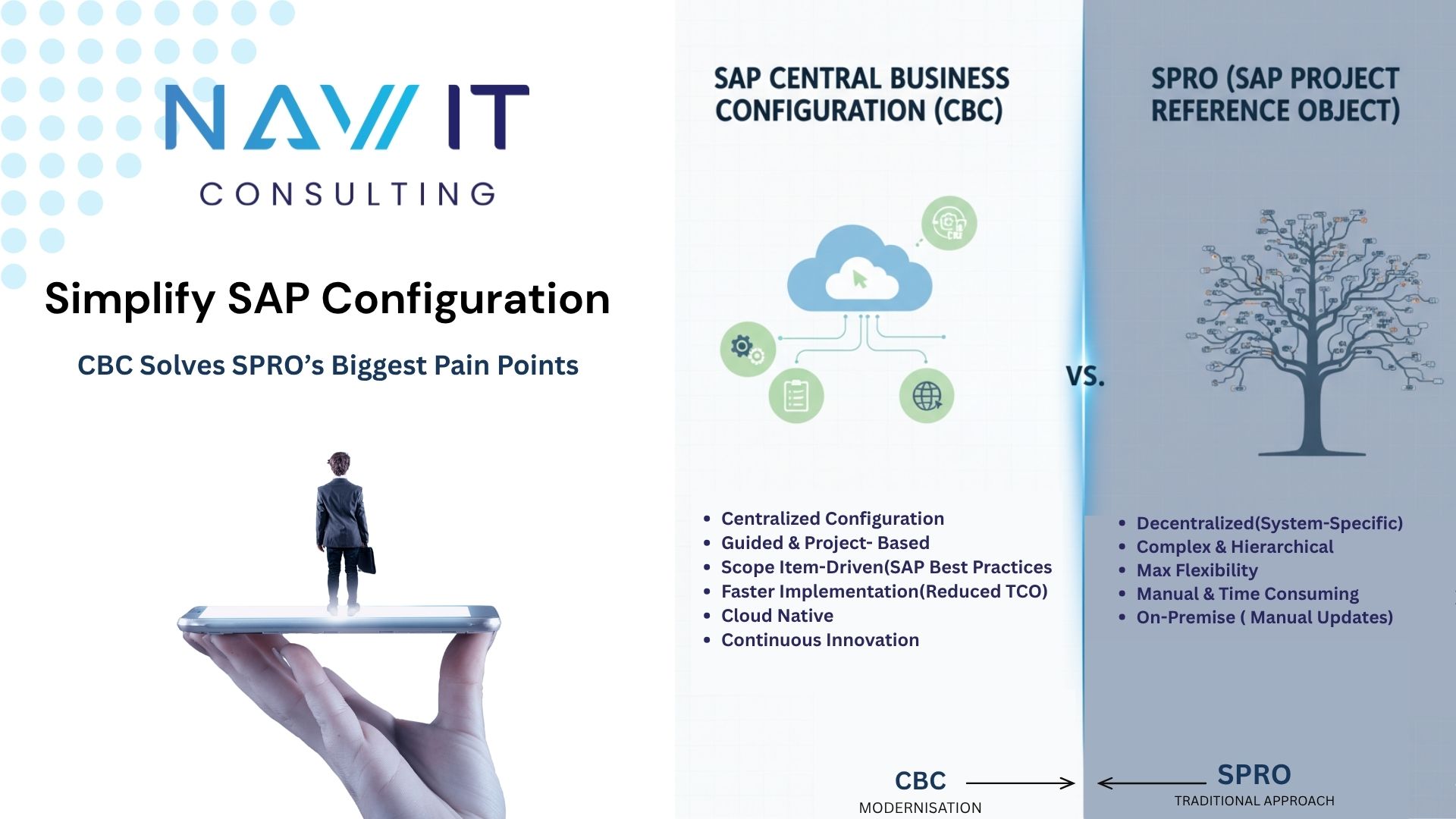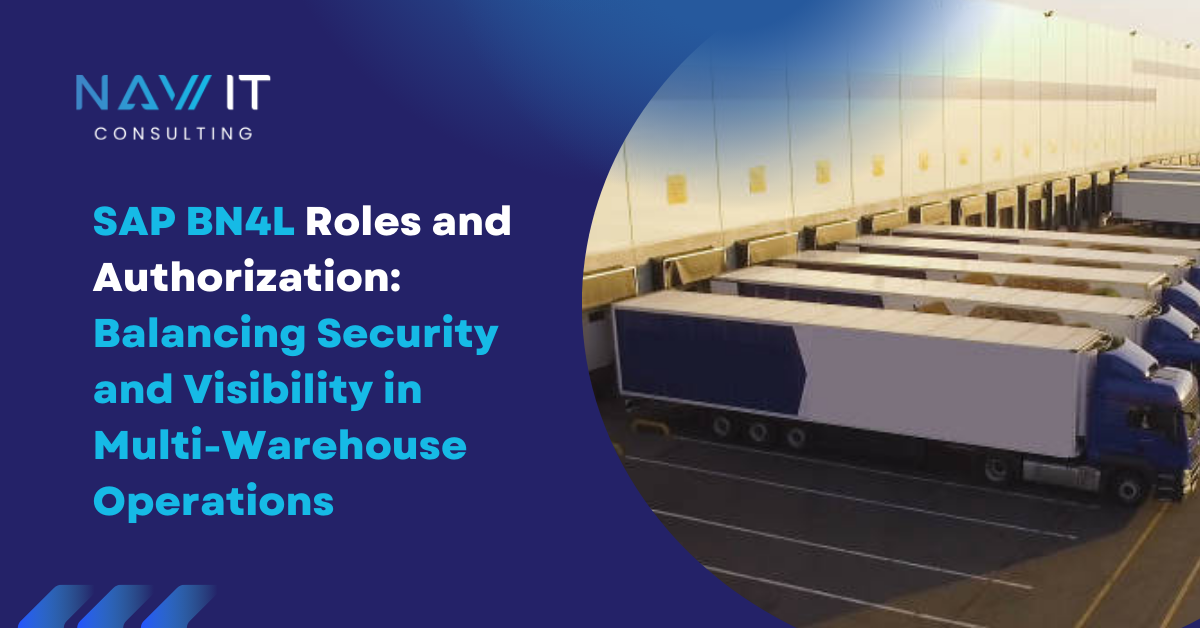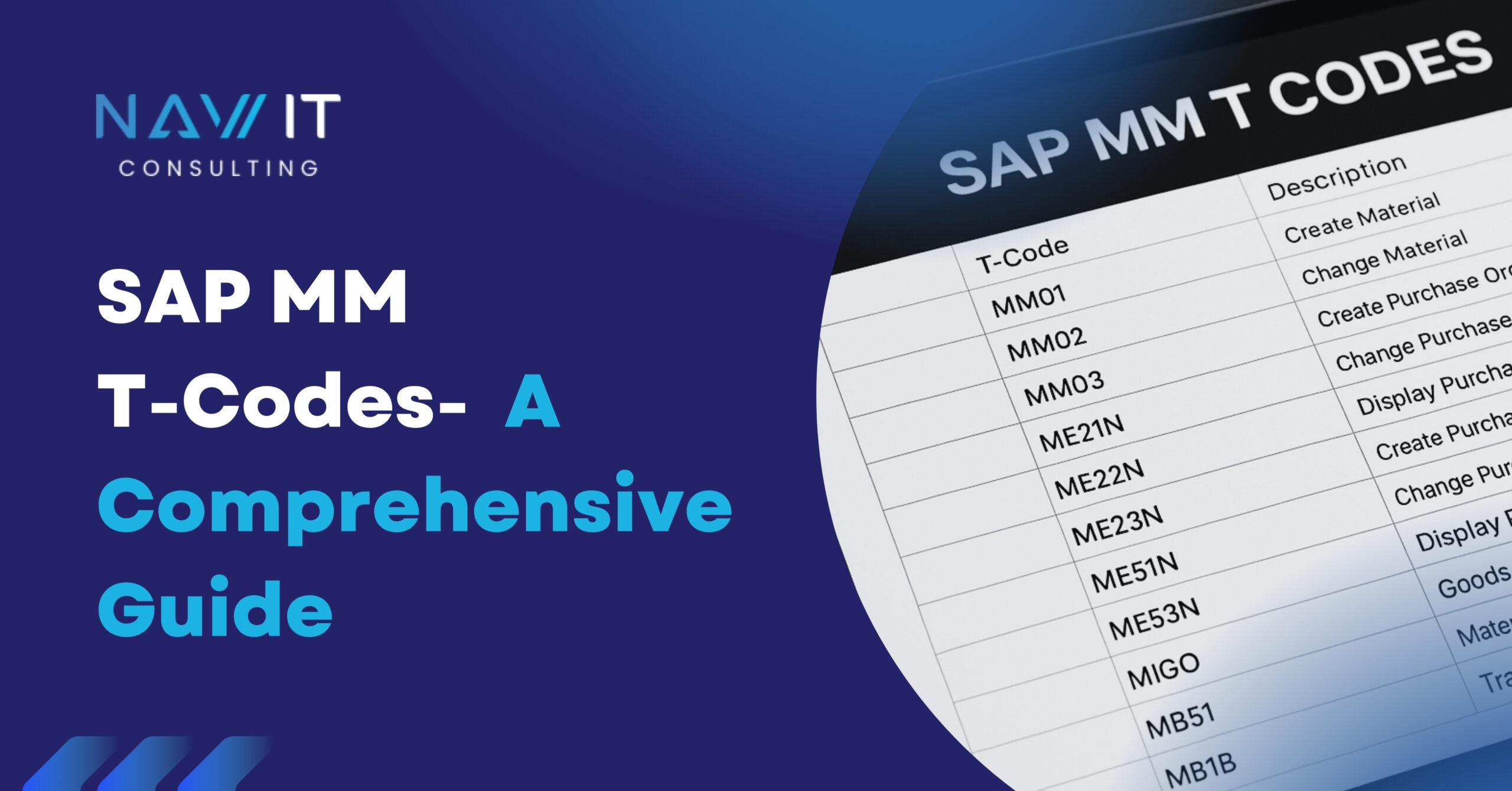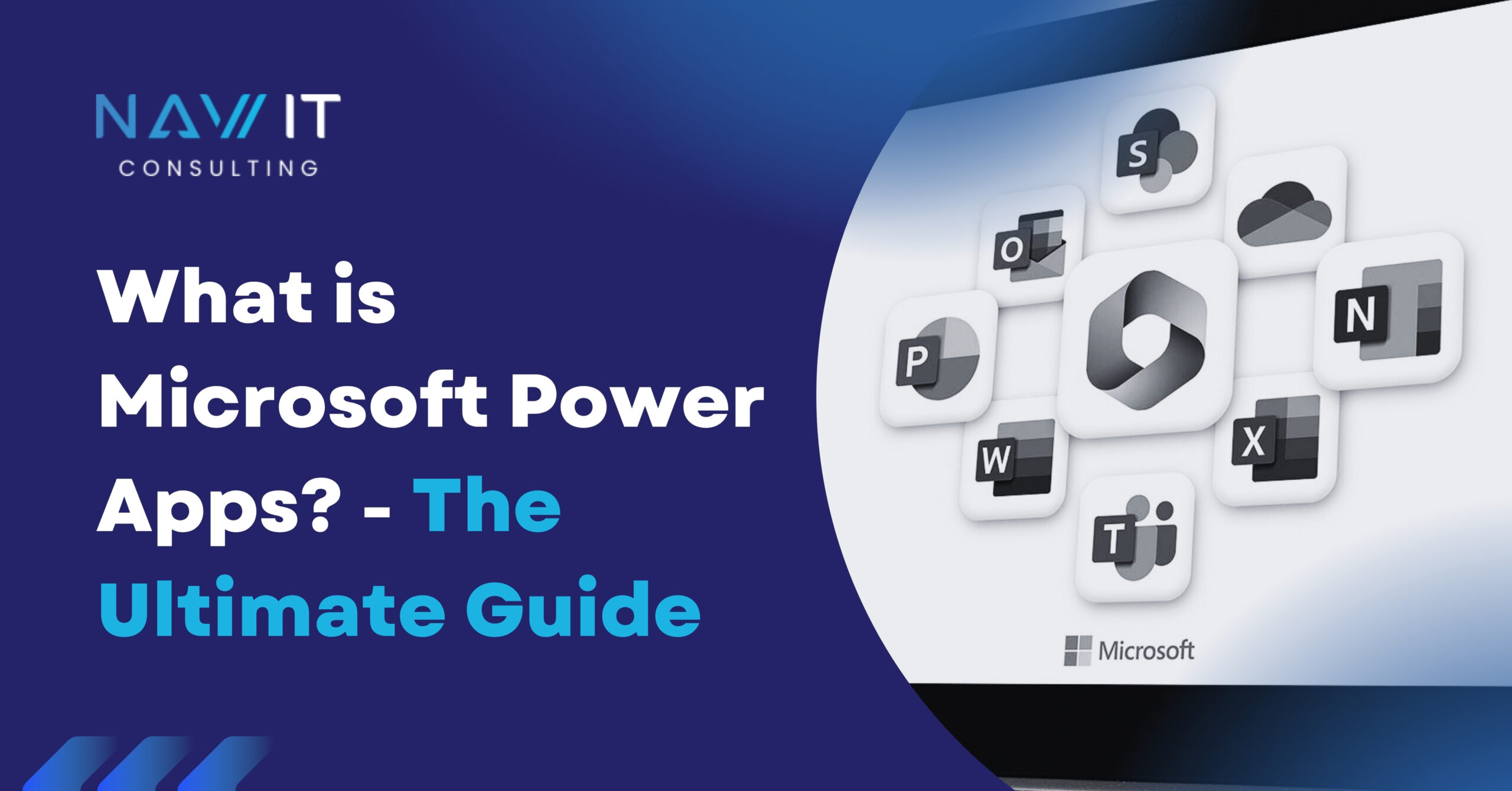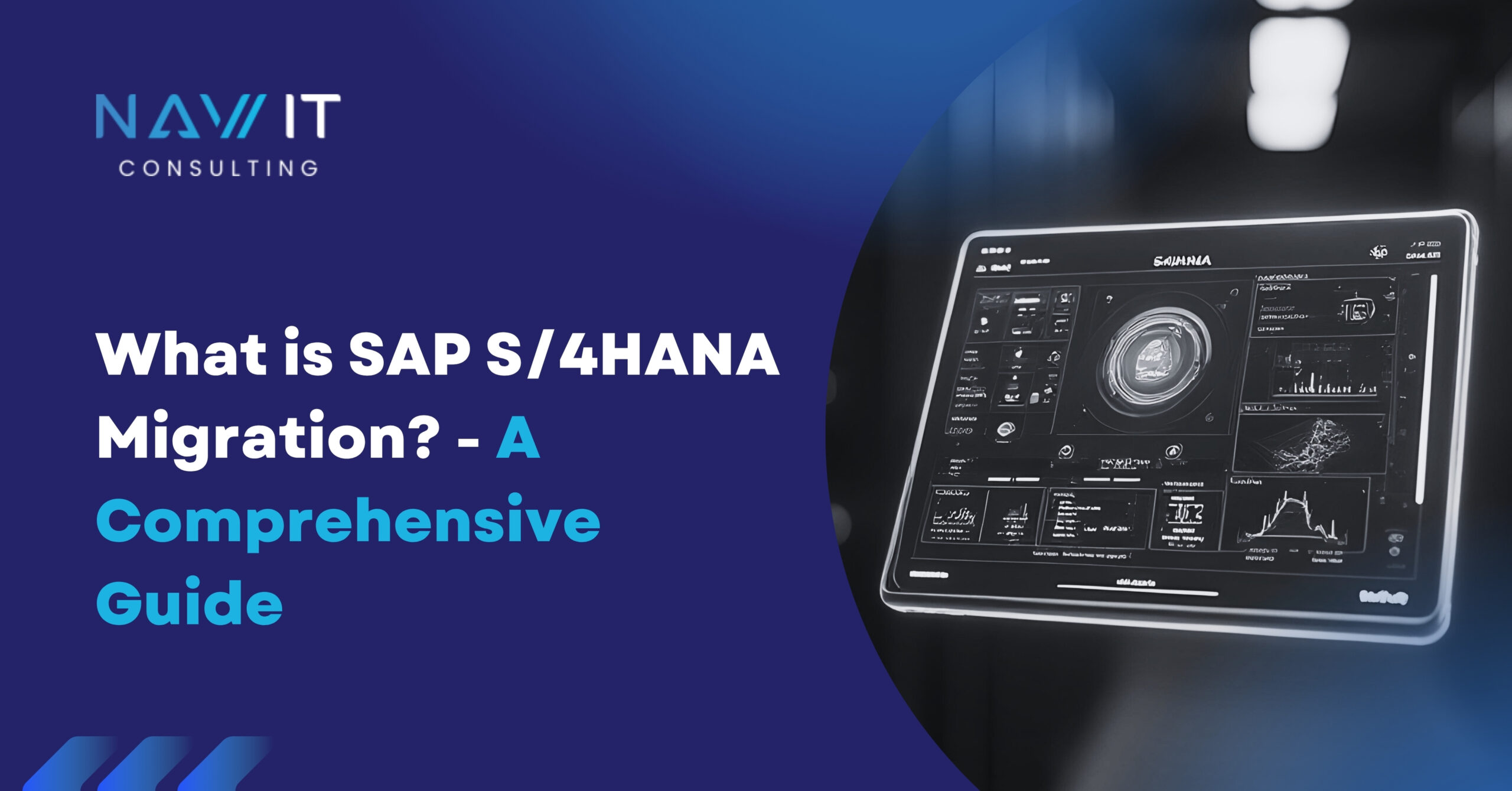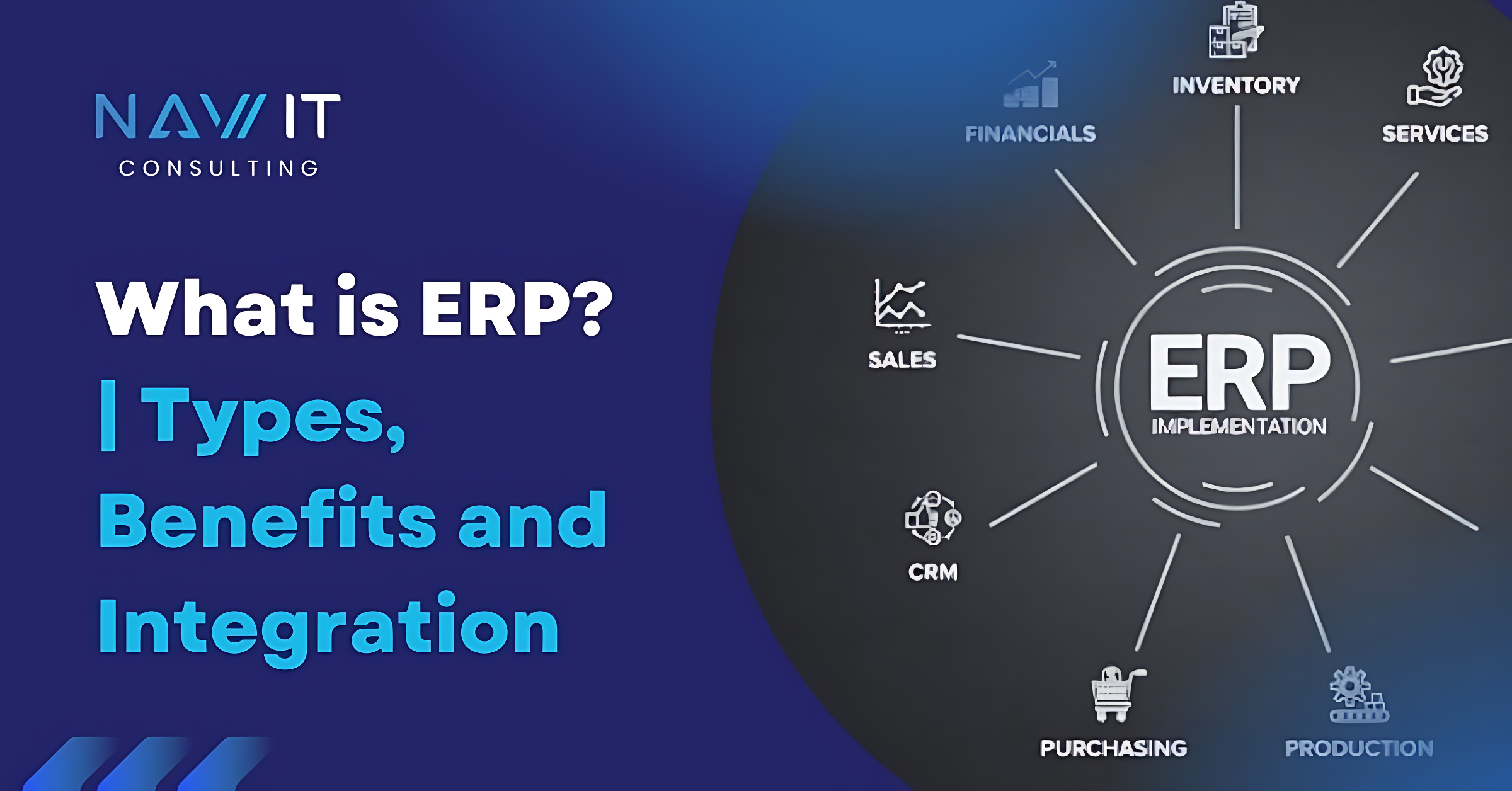S/4HANA and SAP ECC are comprehensive business management solutions developed by SAP. ERP business suite, an established solution for decades, integrates core business processes like finance, logistics, human resources, etc. SAP S/4HANA is designed to perform these tasks more efficiently using an in-memory database of S/4HANA.
S/4HANA promises real-time processing, a simplified data model, and a user-friendly interface. This blog will explore the features, advantages, disadvantages, and key considerations of both systems.
Key Features of ERP System SAP
ERP is known for its comprehensive and modular design, enabling organizations to manage various business processes efficiently. Its key features include modularity, integration capabilities, extensive customization options, and scalability, making it a versatile solution for businesses of all sizes.
- Modularity: It includes various modules such as Financial Accounting (FI), Controlling (CO), Materials Management (MM), Sales and Distribution (SD), and Human Resources (HR). Each module focuses on specific business functions and can be implemented independently based on business needs.
- Integration: The system ensures seamless integration across different business functions, providing a unified view of the business.
- Customization: It can be extensively customized to meet the unique requirements of various industries and organizations.
- Scalability: It is scalable to accommodate the growing needs of businesses, making it suitable for organizations of all sizes.
Join our LinkedIn Network for updates, tips, professional growth and many more:
Advantages of SAP ERP
ERP has numerous advantages that have contributed to its widespread adoption. These include comprehensive functionality across various business processes, proven stability and reliability, extensive customization options, seamless integration capabilities, and a large user community offering extensive support and resources.
- Comprehensive Functionality: ERP System SAP covers all essential business processes, providing an integrated solution that enhances operational efficiency.
- Proven Stability: Having been in use for several decades, ERP is a mature and stable system with a large user base and extensive community support.
- Wide Adoption: Due to its longevity and reliability, ERP is widely adopted across various industries worldwide.
- Customization Options: The system offers high flexibility and customization options to cater to specific business requirements.
- Integration Capabilities: It integrates well with other SAP products and third-party applications, ensuring a cohesive IT environment.
Disadvantages of ERP System SAP
Despite its strengths, ERP System SAP has several disadvantages that organizations must consider. These include the system’s complexity, high costs associated with licensing and maintenance, lengthy and costly upgrade processes, older user interfaces that may not be as intuitive, and performance limitations due to reliance on traditional databases.
- Complexity: ERP’s comprehensive nature and extensive functionality can make it complex to implement and manage, requiring significant expertise.
- Cost: The initial licensing, implementation, and ongoing maintenance costs can be high, making it a considerable investment.
- Upgrades: Upgrading the system can be time-consuming and costly, often requiring significant planning and resources.
- User Experience: The older user interfaces may be less intuitive compared to modern software solutions.
- Performance: The reliance on traditional databases can result in slower performance, especially when handling large volumes of data.
Key Features of SAP S4 HANA Module
SAP S/4HANA represents a significant advancement in ERP technology, offering several key features that enhance its performance and usability:
- In-Memory Database: Built on the SAP HANA in-memory database, SAP S4 HANA Module provides faster data processing and real-time analytics.
- Real-Time Analytics: The SAP S/4HANA system enables real-time data access and insights, allowing for better decision-making and operational efficiency.
- Simplified Data Model: SAP S/4HANA uses a simplified data model, reducing data redundancy and complexity.
- User-Friendly Interface: The modern SAP Fiori user interface offers an intuitive and consistent user experience across devices.
- Cloud and On-Premise Options: SAP S4 HANA Module is available as both a cloud-based and on-premise solution, providing flexibility in deployment.
Advantages of SAP S/4HANA
SAP S4 HANA Module offers several significant advantages, including enhanced performance through faster processing speeds, real-time data access for better decision-making, simplified processes and reduced operational complexity, an improved user experience with SAP Fiori, and future-readiness to support new technologies and innovations.
- Performance: The HANA in-memory database significantly enhances processing speeds, enabling faster transaction processing and analytics.
- Real-Time Data: Real-time data access and analytics provide businesses with up-to-date insights for informed decision-making.
- Simplified Processes: The simplified data model and streamlined processes reduce operational complexity and improve efficiency.
- User Experience: The modern SAP Fiori interface offers an improved and consistent user experience, enhancing user adoption and satisfaction.
- Future-Ready: Designed to support future innovations and technologies, S/4HANA ensures that businesses remain competitive in a rapidly evolving landscape.
Disadvantages of SAP S/4HANA
While SAP S/4HANA presents many benefits, it also has some disadvantages. These include high costs for licensing and migration, a complex and potentially risky migration process, a steep learning curve for existing ERP users, limited customization options compared to ERP, and potential compatibility issues with older systems and customizations.
- Cost: The licensing, implementation, and migration costs for SAP S/4HANA can be high, representing a significant investment. Businesses must carefully assess the financial implications of adopting this technology.
- Complex Migration: Migrating from ERP to S/4HANA can be complex and risky, requiring careful planning and execution. This complexity can lead to potential disruptions in business operations.
- Learning Curve: Users familiar with ERP may face a steep learning curve when transitioning to S/4HANA. This can require additional training and support.
- Customization Limitations: While S/4HANA offers some customization options, they may be more limited compared to ERP. This limitation can affect businesses with highly specific or unique requirements.
- Compatibility Issues: There can be compatibility issues with older systems and customizations, necessitating additional adjustments and testing. This can increase the time and cost of migration.
Comparison of SAP ERP and SAP S/4HANA
When comparing ERP and SAP S/4HANA, several key differences emerge:
- Technology: SAP S/4HANA leverages the SAP HANA in-memory database, offering faster processing and real-time analytics, whereas ERP relies on traditional databases. This technological difference significantly impacts system performance and capabilities.
- Data Model: S/4HANA features a simplified data model, reducing data redundancy and complexity, while ERP has a more complex and redundant data structure. This simplification in S/4HANA can lead to more efficient data management and reporting.
- User Interface: S/4HANA provides a modern, intuitive user interface with SAP Fiori, enhancing user experience, whereas ERP’s older interface may be less user-friendly. The enhanced UI in S/4HANA can lead to better user satisfaction and reduced training costs.
- Customization: ERP system offers extensive customization options, while S/4HANA’s customization capabilities may be more limited. This difference is crucial for businesses with unique processes or specialized needs.
- Deployment Options: S/4HANA offers both cloud and on-premise deployment options, providing greater flexibility compared to SAP ERP. This flexibility allows businesses to choose a deployment model that aligns with their IT strategy and budget.
Migration Considerations and Costs
Migrating from ERP to SAP S/4HANA involves several critical considerations. Businesses must evaluate the costs, time required for migration, data migration accuracy, training needs for users, and risk management strategies to ensure a successful transition.
- Cost: The total cost of migration includes licensing, implementation, data migration, training, and potential downtime. Businesses must carefully assess their budget and plan accordingly.
- Time: Migration can be time-consuming, requiring detailed planning and execution. Businesses should allocate sufficient time for each phase of the migration process.
- Data Migration: Ensuring accurate and complete data migration is crucial for a successful transition. Data cleansing and validation are essential steps.
- Training: Users need comprehensive training to adapt to the new system. Training programs should be designed to address the specific needs of different user groups.
- Risk Management: Identifying and mitigating risks associated with migration is critical. Businesses should develop a risk management plan to address potential challenges.
Industry-Specific Solutions
Both ERP and SAP S/4HANA cater to a wide range of industries, offering specialized solutions that address unique challenges and requirements. This section explores how these systems are tailored for specific sectors.
1. Manufacturing
In the manufacturing industry, efficient production processes and supply chain management are crucial. SAP ERP and SAP S/4HANA provide comprehensive modules for:
- Production Planning: These systems enable manufacturers to plan production schedules, manage resources, and optimize workflows. This ensures that production processes are streamlined and resources are utilized efficiently.
- Quality Management: Ensuring product quality is critical in manufacturing. The systems offer tools for quality inspection, compliance checks, and continuous monitoring of production processes, helping maintain high standards.
- Supply Chain Optimization: The ERP solutions offer integrated supply chain management features, including inventory management, procurement, and logistics coordination. This integration ensures smooth operations and timely delivery of products.
2. Retail
For the retail industry, managing customer relationships, inventory, and sales data is essential. SAP ERP and SAP S/4HANA provide:
- Customer Relationship Management (CRM): These systems help retailers track customer interactions, preferences, and purchase history, enabling personalized marketing and improved customer service.
- Inventory Management: Efficient inventory management is crucial for retail businesses. The systems offer real-time inventory tracking, stock level optimization, and automated replenishment, reducing the risk of stockouts and overstocking.
- Point of Sale (POS) Integration: Integration with POS systems ensures that sales data is accurately captured and reflected in the ERP system, providing real-time insights into sales performance and inventory levels.
3. Healthcare
In healthcare, compliance with regulations and efficient management of patient data are paramount. SAP ERP and SAP S/4HANA offer:
- Patient Data Management: These systems provide secure and efficient management of patient records, ensuring that healthcare providers have access to accurate and up-to-date information.
- Regulatory Compliance: The ERP solutions support compliance with healthcare regulations, such as HIPAA, ensuring that patient data is handled securely and in accordance with legal requirements.
- Resource Allocation: Effective resource management is crucial in healthcare settings. The systems offer tools for scheduling and allocating medical staff, equipment, and facilities, optimizing the use of resources.
4. Financial Services
For businesses in the financial services sector, including banks and insurance companies, the ERP systems provide robust financial management and compliance features:
- Financial Management: SAP ERP and SAP S/4HANA offer comprehensive financial management tools, including general ledger, accounts payable and receivable, and financial reporting. These features help businesses maintain accurate financial records and streamline financial processes.
- Risk Management: The ERP solutions provide risk management tools that help financial institutions identify, assess, and mitigate risks, including credit risk, market risk, and operational risk.
Data Security and Compliance
Data security and compliance are critical considerations for any business implementing an ERP system. ERP and SAP S/4HANA offer strong security features and support for regulatory compliance.
Data Security
- Encryption: Both systems use advanced encryption techniques to protect sensitive data at rest and in transit, ensuring that unauthorized parties cannot access the information.
- Access Control: Role-based access control (RBAC) allows businesses to define and manage user permissions, ensuring that only authorized personnel have access to specific data and functionalities.
- Data Masking: Sensitive data can be masked, so that users only see the information they need to perform their jobs, reducing the risk of data breaches.
Compliance
- GDPR Compliance: For businesses operating in the European Union, compliance with the General Data Protection Regulation (GDPR) is essential. ERP system and SAP S/4HANA provide tools to manage personal data in accordance with GDPR requirements.
- HIPAA Compliance: In the healthcare industry, the Health Insurance Portability and Accountability Act (HIPAA) mandates strict controls on patient data. The ERP systems offer features to ensure compliance with HIPAA, including audit trails and secure data storage.
- SOX Compliance: For publicly traded companies, compliance with the Sarbanes-Oxley Act (SOX) is crucial. The systems provide controls and reporting tools to ensure that financial data is accurate and secure.
Audit Trails
- Comprehensive Tracking: Both ERP and SAP S/4HANA offer detailed audit trails that track changes to data and system configurations. This feature is essential for compliance and security audits, providing a record of who made changes and when.
- Data Integrity: Audit trails help ensure the integrity of data by providing a transparent record of all changes. This feature is particularly important for businesses that need to demonstrate compliance with regulatory requirements.
Data Privacy
- Personal Data Management: The systems provide tools for managing personal data, including consent management and data anonymization, ensuring compliance with data protection laws.
- Data Retention Policies: Businesses can define data retention policies to manage the lifecycle of personal data, including archiving and deletion, in accordance with legal requirements.
Join our LinkedIn Network for updates, tips, professional growth and many more:
Total Cost of Ownership (TCO)
Understanding the total cost of ownership (TCO) is crucial for businesses considering an ERP solution. TCO includes all costs associated with the system over its lifecycle.
Licensing Costs
- Initial Licensing: The initial cost of licensing for ERP business suite and SAP S/4HANA can be substantial, depending on the number of users and the modules required. Businesses must consider these costs when planning their ERP implementation.
- Subscription Models: For SAP S/4HANA Cloud, subscription-based pricing offers a more predictable cost structure, which can be advantageous for businesses looking to avoid large upfront investments.
Implementation Costs
- System Configuration: Implementation costs include configuring the system to meet the specific needs of the business. This process can be complex and time-consuming, especially for large organizations with unique requirements.
- Customization: Customization costs can vary significantly depending on the extent of modifications required. While ERP offers extensive customization options, SAP S/4HANA may have more limited customization capabilities.
- Integration: Integrating the ERP business suite system with existing systems and third-party applications can add to the implementation costs. Businesses must ensure that these integrations are carefully planned and executed to avoid disruptions.
Maintenance Costs
- Software Updates: Ongoing maintenance costs include software updates, which are necessary to keep the system current and secure. SAP S/4HANA Cloud offers automatic updates, reducing the burden on IT staff.
- Technical Support: Businesses may need to budget for technical support, either from SAP or third-party providers, to ensure that the system runs smoothly and any issues are promptly addressed.
- Hardware Costs: For on-premise implementations, hardware costs can be significant. Businesses must invest in servers, storage, and networking equipment to support the ERP system.
Operational Efficiency
- ROI Considerations: While the initial costs of an ERP business suite system can be high, the long-term benefits of improved operational efficiency and reduced manual processes can provide a significant return on investment (ROI).
- Cost Savings: ERP systems can lead to cost savings in various areas, including reduced labor costs, improved inventory management, and more efficient financial operations.
Third-Party Integrations
The ability to integrate with third-party applications and services is a critical factor when choosing an ERP system. ERP and SAP S/4HANA offer smooth integration capabilities.
Integration Capabilities
- Standard Integrations: Both systems offer standard integrations with a wide range of third-party applications, including CRM, SCM, and HR systems. These integrations help businesses create a cohesive IT environment.
- APIs and Connectors: The availability of APIs and pre-built connectors facilitates easy integration with various third-party applications. This capability is essential for businesses looking to extend the functionality of their ERP system.
Custom Integrations
- Unique Business Needs: Some businesses have unique requirements that necessitate custom integrations. Both SAP ERP and SAP HANA provide the flexibility to develop custom integrations, allowing businesses to tailor the system to their specific needs.
- Development Tools: The systems offer a range of development tools and platforms, such as SAP NetWeaver and SAP Cloud Platform, to support custom integration projects.
Ecosystem Support
- Partner Ecosystem: SAP has a vast ecosystem of partners offering complementary solutions, such as analytics tools, e-commerce platforms, and industry-specific applications. This ecosystem provides businesses with a wide range of options for extending the capabilities of their ERP system.
- Third-Party Applications: The availability of third-party applications in areas like business intelligence, data analytics, and customer relationship management can enhance the functionality of the ERP system and provide additional value.
Future Trends in ERP Systems
ERP systems continue to evolve, driven by technological advancements and changing business needs. Key future trends in ERP systems include:
- Artificial Intelligence: Integrating AI for predictive analytics, automation, and improved decision-making.
- Cloud Adoption: Increasing shift towards cloud-based ERP solutions for greater flexibility, scalability, and cost-efficiency.
- Mobility: Enhancing mobile access and functionality to support a remote and mobile workforce.
- Integration: Improved integration with the Internet of Things (IoT) and other emerging technologies for real-time data collection and analysis.
- User Experience: Ongoing focus on improving user interfaces and experiences to enhance user adoption and satisfaction.
Conclusion
SAP ERP and SAP S/4HANA are powerful ERP solutions, each with unique strengths and challenges. ERP provides comprehensive functionality and stability, making it a reliable choice for many businesses. On the other hand, SAP HANA Module offers enhanced performance, real-time analytics, and a simplified user experience, making it ideal for businesses looking to leverage advanced technology. Choosing the right solution depends on your specific needs, budget, and readiness for digital transformation. Understanding the features, advantages, and disadvantages of each system is crucial for making an informed decision.
